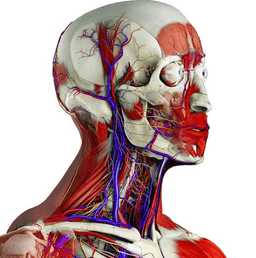
05 FINAL EXAM REVIEW: Skeletal System
Quiz by Kelly Gallagher
Feel free to use or edit a copy
includes Teacher and Student dashboards
Measure skillsfrom any curriculum
Measure skills
from any curriculum
Tag the questions with any skills you have. Your dashboard will track each student's mastery of each skill.
With a free account, teachers can
- edit the questions
- save a copy for later
- start a class game
- automatically assign follow-up activities based on students’ scores
- assign as homework
- share a link with colleagues
- print as a bubble sheet
18 questions
Show answers
- Q1What type of tissue covers the epiphysis of long bones and reduces friction in joints?articular cartilagespongy boneperiosteumyellow bone marrow30s
- Q2The presence of an epiphyseal plate indicates that the ___________.bone has stopped growingbone has no more articular cartilagebone is still growingbone has been broken30s
- Q3Long bones have a proximal and distal ____________ at each end.epiphysisdiaphysisperiosteumcartilage30s
- Q4The _________________ is a connective tissue covering the length of the diaphysis, providing passage for blood supply and an anchor for skeletal muscles.diaphysisepiphysisendosteumperiosteum30s
- Q5Which of these bones is associated with the hand?phalangescalcaneusmandibletarsals30s
- Q6Which of these bones is part of the axial skeleton?ischiumfibulasternumhumerus30s
- Q7The skull, vertebral column & thoracic cage form the _______________ skeleton.parasympatheticappendicularaxialmedian30s
- Q8The femur, tibia & humerus are all classified as ________________.short boneslong bonesirregular bonesflat bones30s
- Q9Bones of the cranium are classified as ________________ bones.longflatirregularshort30s
- Q10You can tell a female skeleton from a male skeleton because _______________.it has 1 more pair of ribsthe skull is smallerit has shorter toesthe pelvic opening is wider30s
- Q11The bone cells the respond to parathyroid hormone (PTH) to break down the bone matrix and release calcium into the blood are called __________________.osteonserythrocytesosteoblastsosteoclasts30s
- Q12In order for bones to be strong enough to carry weight, they need to experience __________ during their growth process.humiditynutrientscorrect temperaturestress30s
- Q13An incomplete bone break, known as _________________ fracture, is commonly seen in children.a greensticka comminuteda spirala compacted30s
- Q14A fracture that is common in osteoporosis sufferers is a __________________.spiral fracturesimple fracturegreenstick fracturecompression fracture30s
- Q15The humeroulnar (elbow) joint is an example of a ____________ joint.hingepivotsaddleball-in-socket30s